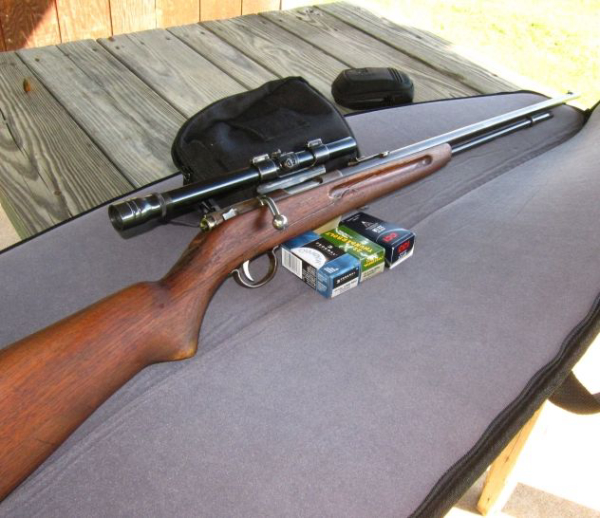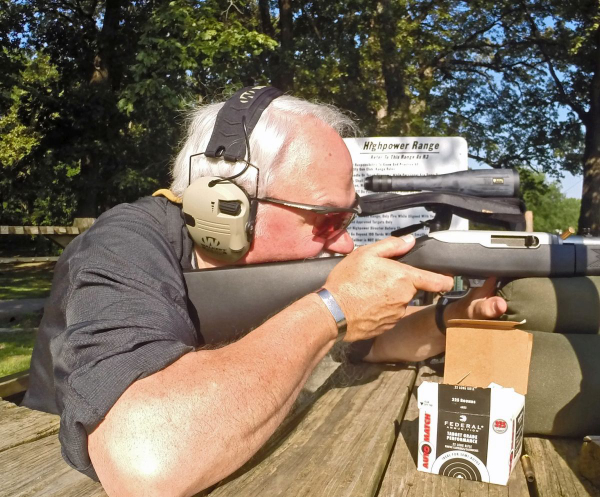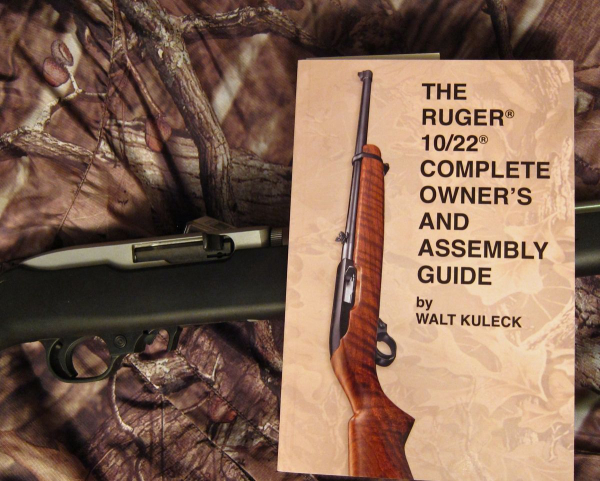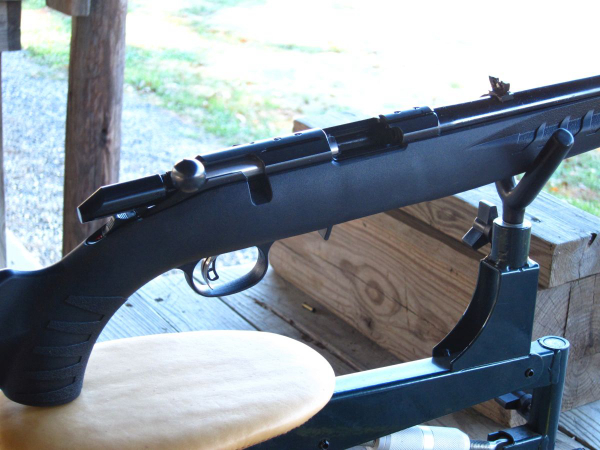What makes a 22 rifle important? We could argue popularity – the more units produced over the longest time indicates great popularity and that’s often due to reliability, features, utility and, now, after-market support.
Going along with my “artifacts” discussion about a 357 Magnum revolver, many of these rifles evoke memories for those of us who have lived long enough to lose people important to us.

Sometimes, it’s just knowing someone who’s a gun person who doesn’t own a 22 rifle. Like the idea that “nature abhors a vacuum,” it’s something that seems to cry out to be resolved. Like most, I began my shooting experience with a 22 rifle, a long drink of water that was Dad’s old Springfield 87A (marked Springfield J. Stevens Arms Company, Chicopee Falls, Mass. USA) that’d seen better days. That long old gun was replaced by the (“space aged” in those days) Remington Nylon 66. A shorter rifle, much lighter and with a shorter length of pull, the sight picture was decidedly handgun-like, with the front blade appearing as a square post through the squared rear notch on the barrel-mounted rear sight.
He taught me shooting through plinking. There were no ranges around to speak of – guns were considered a problem in those bad old days. A Gallup poll from 1958 showed most Americans wanted a handgun ban.
The targets were irregular, cans mostly, in various positions and attitudes. I struggled with the rifle, long and heavy. My nearsightedness contributed to a natural lack of ability and that front sight was so far away. I’d suffered a broken right arm and for some time had to shoot the long gun from the left side. I found my left eye was my master eye.
In high school, I got the 50-foot smallbore Expert pin once, in my freshman year. Shooting that fine old Remington Target single shot on that ROTC indoor range was mind-numbing. The positions were contrived and served no use I could imagine; my experience had been on cans, twigs, blocks of wood and boulders on the sides of the strip mine dumps just outside our little community.

Years later, I was chatting with Mike Rafferty and mentioned the fact that I didn’t even own a rimfire rifle. Sometime later, he had me come out to his car. It seems he’d been carousing at a gun show and found an ancient Remington rimfire with one of the old side-mounted scopes on board. I looked it over and told him it was interesting.
“Good,” he said, “Because it’s yours now.”
“The stock is cracked but repaired,” he said, “and the deal was right but I really don’t need it.” I don’t recall what he paid but I never forgot the gesture.
The Remington Model 34 is a tube-fed, bolt-action .22 rimfire rifle capable of using Shorts, Longs and Long Rifle rounds. The side-mounted scope, held on by two screws into the left side of the receiver, was a J.C. Higgins 4x of unknown vintage.
The Remington Model 34 was made from 1932 to 1935 – this gun has a manufacturing code of July, 1935. The gun was, at the time I got it out to study it and shoot it, 79 years and 11 months old. Only 163,000 of the guns were made.

To this, I added a Ruger 10/22 Takedown. I’m late to the 10/22 – it’s been around since the 1960s and I’ve only taken an interest in the last several years. It’s an incredibly practical little rifle, very handy and one I’ve shot far too little.
The one I have is stock, stainless steel with black synthetic furniture, a gold bead on the front sight and an ‘adjustable’ rear sight further back on the barrel. Light and trim at just over 4 ½ pounds, its 18 ½” barrel gives the whole rifle a length overall of just over three feet. It was issued with a carry bag and came with a scope base adapter and a 10-round rotary magazine.

Part of the 10/22’s appeal is the vast after-market for furniture, barrels, triggers and other accessories as well as the amount of support gear available from ShopRuger.com.

That was followed by the Ruger American Rimfire Compact. The Compact was a hit with me due to the “real normal” length of pull – 12 ½” – with the possibility of getting the long length of pull stock modules (they’re interchangeable) that are supplied with the Standard American Rimfire guns.
The barrel is short at 18” -- it’s handy and quick. The gun sans optics weighs in at just under 5 1/2 pounds empty. The Rimfire American is supplied with iron sights – the front is a fiber-optic unit from Williams Gunsights. The safety is tang-mounted, as Jeff Quinn of Gunblast.com was known to say, “where God intended it.”
I couldn’t agree more.
I selected an optic from Vortex Optics, the Diamondback 2-7x35 Rimfire, a fourteen-ounce unit with a one-inch tube. The reticle is the Vortex V-Plex hunting reticle. The click adjustments are light but pronounced enough that even I could feel them.
While the rifle is supplied with a cheek piece riser, I didn’t change the stock module to the higher cheek piece unit. After mounting the Diamondback, I mounted the rifle and saw that I had a good cheek weld as I peered down the center of the optic – no need to change it.
These aren’t the only important rimfire rifles out there. We each have those that stand out. These are my choices.
— Rich Grassi